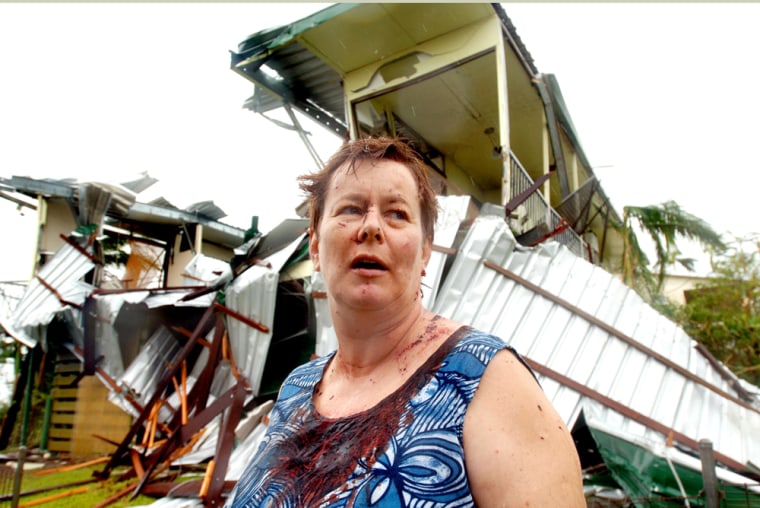The emergencies were startlingly similar: a huge, swirling storm bearing down on coastal areas with frightening inevitability.
Within a few hours of the most powerful cyclone in decades hitting Australia’s northeastern coast on Monday, state and federal governments had declared a state of emergency, prepared Black Hawk helicopters to run rescue missions and announced cash payouts for victims.
Emergency relief officials said they had studied the response to Hurricane Katrina last year — and learned what not to do.
The storms — hurricanes are called cyclones in the region — looked and felt the same, down to naming rites. This one was called Larry.
Striking dissimilarities
But the scale of destruction didn’t compare with that of Katrina when it slammed into the Gulf Coast last August, flooding New Orleans and leaving tens of thousands of people stranded for days.
Larry roared ashore at 180 mph on a coastal belt where one-pub towns have sprung up between sugar and banana plantations. The crops were flattened at a cost to farmers of millions, local officials said. Innisfail, a town of fewer than 10,000 people, suffered most, with roofs lifted from scores of homes.
But there was no offshore oil industry to be disrupted, as happened on the Gulf Coast. And the region’s biggest draw, the diving mecca of the Great Barrier Reef, escaped largely undamaged. And — remarkably, officials said — there were no deaths and only minor injuries.
Australian officials were leaving no room for the outcry about a lack of preparedness and lackluster response that engulfed the White House in the weeks after Katrina, which sent President Bush’s approval ratings plummeting.
Warnings issued days before
The Queensland State Emergency Service began issuing public warnings Saturday, and stepped up the effort throughout the weekend, spokesman Ben Creagh said.
After daybreak, Queensland state leader Peter Beattie declared a state of emergency, allowing federal authorities to get involved.
Prime Minister John Howard sent aides to meet with emergency relief officials, military chiefs and government lawyers to plot a rescue and cleanup strategy.
By Monday afternoon, the Australian Defense Force had announced helicopters were standing by near Innisfail to fly in a medical team and rescue missions to bring victims out, if necessary. Soldiers were ready to purify water supplies and clear roads.
Millions in aid expected
Howard also announced a cash payment of $720 for each adult and $400 for each child who lost their homes — an initial response that was expected to burgeon quickly to millions of dollars in aid.
On the Gulf Coast, the response was similar, though far from what was needed.

New Orleans undertook the largest evacuation in its history in a mostly orderly fashion. The National Guard in the coastal states put troops, relief supplies and equipment into position before Katrina hit. Power companies sent in trucks to repair damaged power grids.
Relief agencies like the American Red Cross and federal emergency planners moved food, gasoline and first-aid into the hurricane zone.
The problem for the Gulf Coast was the response did not match the unprecedented needs after floodwalls and levees that defend New Orleans broke. With more than 70,000 people stranded in the city, resources were stretched to the breaking point, and relief could not get in fast enough.
Shortcomings in U.S. response
The flooding of New Orleans revealed shortcomings in the nation’s ability to deal with a major catastrophe in a metropolitan area. It also has prompted soul-searching among business and political leaders who hope to avoid a repeat of the devastation of Katrina, which killed more than 1,300 people.
Creagh conceded it was difficult to compare Australia’s cyclone with Katrina, citing flooding as one big difference.
“Everyone here studied Katrina and took a lot of messages away, a lot of lessons,” Creagh said. “There was absolutely no complacency at the planning level at all, and I think that shows.”
